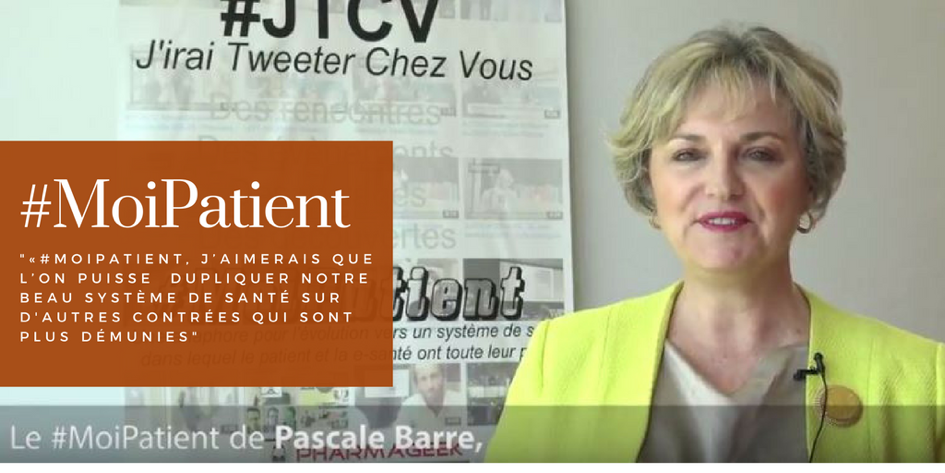J&J sets new pharma standard for sharing clinical trial data
01/02/2014Surprising Social Media Statistics from 2013 (Infographic)
01/02/2014L’engagement des patients n’est pas une évidence : ambiguïté conceptuelle entre professionnels et patients
by Molly Gamble – [ See my comment, if you want it quickly read – but that would be a shame 😉 ]
Patient-centered care is a cornerstone of any accountable care organization, but creating or joining one doesn’t necessarily make patient engagement any easier. In the world of healthcare business, patient engagement may sound like a « soft » concept, but its difficulty is nothing to underestimate.
David Muhlestein, PhD, director of research at Leavitt Partners in Salt Lake City, says a minority of patients want to be engaged with their care teams in actively managing their healthcare. The high majority — likely approaching 70 percent — want to turn their care over to their physician and have them take the reigns. The rest of patients do not want to share decisions about their healthcare with physicians at all — they prefer to decide on their own.
« ACOs are finding it’s really hard to get people engaged, » says Dr. Muhlestein. « Some are proactive or are really trying to engage patients in different ways, but they’re not particularly seeing more success than anyone else. »
What is working for ACOs’ patient engagement? What are the biggest roadblocks? As it turns out, there are several definitions of patient responsibility, high-deductible health plans are bad news for accountable care and no ACO provider will be successful on a high horse.
Seven degrees of engagement
There are numerous buzzwords for patient responsibility — patient engagement, accountability, skin in the game. It’s easy to lump these ideas together as synonymous, but Dr. Muhlestein says there are some nuances.
For example, patients and physicians may arrive with different expectations for patient engagement. Patients see it as shared decision-making, or talking to a physician before a decision is made about their treatment to learn about the pros and cons, then making the ultimate decision in conjunction with the physician. It’s a behavior largely reserved for the visit to the physician.
Physicians, on the other hand, see engagement as active condition management. This includes lifestyle changes, adherence to medications and regular dialogue with the care team to ensure the care plan is going smoothly. Essentially, this version of patient engagement involves the patient taking on more responsibilities that traditionally belonged to clinicians and carrying them out between physician visits.
People who have used accountants to complete income taxes may see where patients are coming from. Instead of doing a few tasks on a daily basis, many people find it easier to drop off their financial paperwork and receipts at the end of the year and let someone else do the math. The same is often true for patients’ expectations for healthcare.
« You want to say, ‘Here, you deal with this. I’ll come back next month and you’ll tell me how to change the doses of my meds,' » says Dr. Muhlestein.
How having « skin in the game » could muddle accountable care
There’s another shade of patient responsibility, one that is a little greener in hue. More patients are taking on more financial responsibility for their healthcare. Recent years have brought a boom of high-deductible health plans, which cut businesses’ health benefit costs by shifting more responsibility onto their employees. This is not the best news for people trying to advance accountable care. Some ACO leaders simply call these health plans outrageous, even immoral.
« It’s something we’re concerned about, » says Marcia Delk, MD, chief quality officer with Marietta, Ga.-based WellStar Health System, a five-hospital system participating in the Medicare Shared Savings Program. Dr. Delk spoke about the trend more generally, as high deductibles don’t pertain to Medicare beneficiaries. « Those individuals with more of a responsibility to their bills are very price sensitive to whatever healthcare they’re buying. » And this sensitivity extends to basic preventive care — a huge component of population health — that is covered by their plans.
A 2012 study conducted by Rand Corp., Towers Watson and the University of Southern California examined families’ use of care in the first year after switching from traditional plans to high-deductible health plans. These families spent, on average, about 14 percent less on their healthcare than those enrolled in traditional plans. But they also cut back on beneficial preventive services — such as cervical and colorectal cancer screenings, mammograms, and blood tests for glucose and lipids — even though most of these preventive services are covered under consumer-directed plans…
Much like the financial case providers must make for investments in population health management — linking initial costs to long-term gains — physicians and care teams may need to take a similar approach with their patients. Robust communication and patient education can help them understand the value of their vaccinations, mammograms and other preventive measures, and how these are not the measures to skimp on.
« If we engage patients properly and work with them to understand the benefit of taking care of a chronic condition, or getting a colonoscopy, and how that will reduce costs later on, it can work, » says Dr. Delk.
Reaching instead of preaching
That seems to be the main job description for ACOs today — finding what works.
…
Conclusion
The normal fee-for-service environment does not have financial rewards for patient care coordination or care management programs. Even though ACOs are one of the most progressive steps toward pay-for-performance reimbursement, joining one doesn’t necessarily provide direct reimbursement for patient education and engagement.




